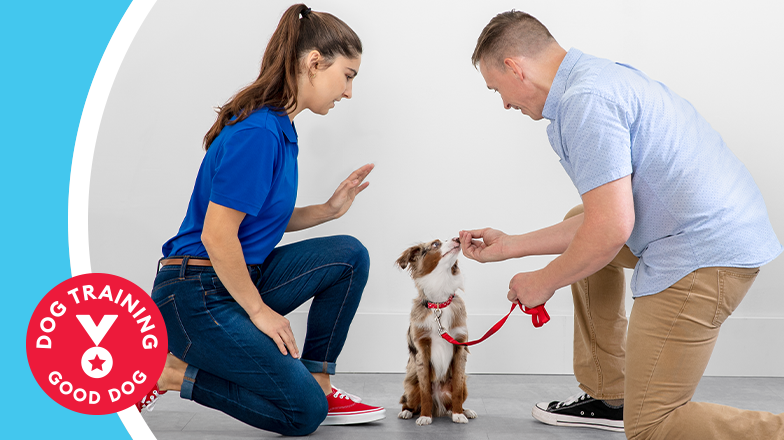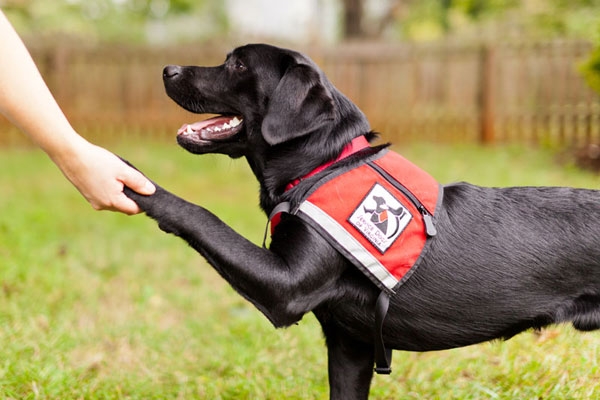Top-Rated Dog Training Rochester NY for All Breeds and Skill Levels
Top-Rated Dog Training Rochester NY for All Breeds and Skill Levels
Blog Article
Newbie's Overview to Effective Pet Dog Training in your home
Effectively educating a dog at home requires a nuanced understanding of canine actions and reliable interaction strategies. Developing clear training objectives, using high-quality incentives, and keeping uniformity across family participants are vital aspects. Incorporating training into day-to-day routines can boost both involvement and retention.
Recognizing Pet Dog Habits
Understanding dog behavior is important for effective training and cultivating an unified relationship in between humans and their canine friends - Puppy Training. Canines communicate primarily through body language, vocalizations, and faces, making it vital for owners to translate these signals properly. Acknowledging behaviors such as tail wagging, growling, or shrinking can offer understandings right into a pet's emotional state and intentions
Additionally, understanding the all-natural instincts of pets, such as their pack mindset, aids proprietors develop management roles within the home. This is vital for producing a structured environment where pets feel safe and are extra responsive to training. Canines are also affected by their socialization experiences; early direct exposure to various settings, individuals, and various other animals can substantially shape their behavior later in life.
Typical behavior concerns, such as aggressiveness, anxiety, or extreme barking, frequently originate from misconceptions or unmet requirements. Observing and addressing these problems without delay can stop escalation and make sure a positive training experience. By promoting a deep understanding of pet habits, proprietors can customize their training techniques to fit their canine friends, inevitably leading to a happy and well-behaved family pet.

Vital Training Devices
A fully equipped training room can considerably improve the efficiency of pet dog training in your home. Crucial training devices ensure that both the trainer and the pet dog can participate in effective sessions that promote learning and bonding.

Spending in a sturdy chain and a comfy, well-fitting collar or harness is important for safety and security and control. These devices aid establish borders and make certain the pet dog stays safe and secure throughout training. Furthermore, an assigned training location, without diversions, help concentration for both the fitness instructor and the canine.
Training help such as training pads, cones, or dexterity tools can additionally enhance the experience by introducing selection and obstacles. Finally, having a notebook or electronic app for tracking progress can be invaluable, allowing you to keep in mind successes and locations for enhancement. Using these essential devices will develop a positive training environment and lay the structure for effective knowing.
Creating an Educating Routine
Establishing a regular training routine is important for reliable dog training in the house. A well-structured routine not just assists in reinforcing wanted actions but likewise supplies your dog with a complacency and predictability. To create an efficient training routine, start by determining details training goals, such as fundamental commands, leash walking, or housebreaking.
Select an assigned time daily for training sessions, ideally when your dog is responsive and alert. Procedure must be brief, roughly 5 to 15 mins, to preserve emphasis and protect against fatigue. Consistency in timing and environment will certainly improve your canine's discovering experience.
Incorporate training right into daily tasks to reinforce skills. Practice commands throughout strolls or nourishment, which integrates finding out right into all-natural regimens. In addition, stay versatile and change the routine as required, fitting your pet's energy levels and mood.
Favorable Support Techniques

When executing favorable support, it is important to select benefits that are inspiring for your pet. High-value treats, such as tiny pieces of poultry or cheese, can be particularly reliable during training sessions. Furthermore, varying the benefits can keep your canine's rate of interest and find more info enthusiasm.
Beginning with easy commands, like "rest" or "remain," and slowly progression to much more intricate jobs. Consistency is crucial; ensure that all member of the family utilize the exact same commands and incentive systems to prevent confusion.
In addition, it is important to remain client and stay clear of irritation. Dogs, like people, discover at their very own pace. By promoting a helpful training atmosphere via positive reinforcement, you can improve your canine's understanding experience while strengthening the bond between you and your fuzzy companion, preparing for successful training results.
Common Training Difficulties
While educating a pet at home can be a satisfying experience, it often comes with a set of usual challenges that can check both perseverance and consistency. One common problem is diversion. Pet dogs may become quickly sidetracked by noises, activities, and even scents in their atmosphere, making it hard to maintain their emphasis during training sessions.
One more difficulty is variance in commands and reinforcement. If member of the family utilize different cues or benefits, it can confuse the dog and hinder development. Establishing a unified technique is vital for reliable communication.
Additionally, dogs can experience aggravation or stress and anxiety, specifically if they do not comprehend what is expected of them. This can cause unfavorable behaviors, such as eating or barking.
Lastly, the timing of reinforcement is critical. Postponed rewards can reduce the efficiency of positive support, as canines may stop working to connect the actions with the benefit.
Conquering these obstacles needs commitment, clear communication, and a structured training strategy - Puppy Training. Acknowledging and resolving these common barriers will certainly lead the method for an extra this website effective and pleasurable training experience in your home
Final Thought
In final thought, successful dog training at home requires an extensive understanding of canine behavior and reliable interaction approaches. By establishing clear training goals and making use of top notch deals with together with positive support, the training procedure becomes a lot more satisfying for both the canine and the fitness instructor.
Developing a regular training routine is vital for effective canine training at home.Favorable reinforcement strategies are basic to reliable pet dog training, advertising preferred behaviors via benefits rather than punishment. By cultivating an encouraging training atmosphere through positive support, you can boost your canine's discovering experience while strengthening the bond in between you and your hairy friend, laying the groundwork for successful training outcomes.
In final thought, successful canine training at home demands an extensive understanding of canine behavior and efficient interaction methods. By developing clear training objectives and making use of top notch treats along with positive reinforcement, the training procedure comes to be extra fulfilling for both the canine and the instructor.
Report this page